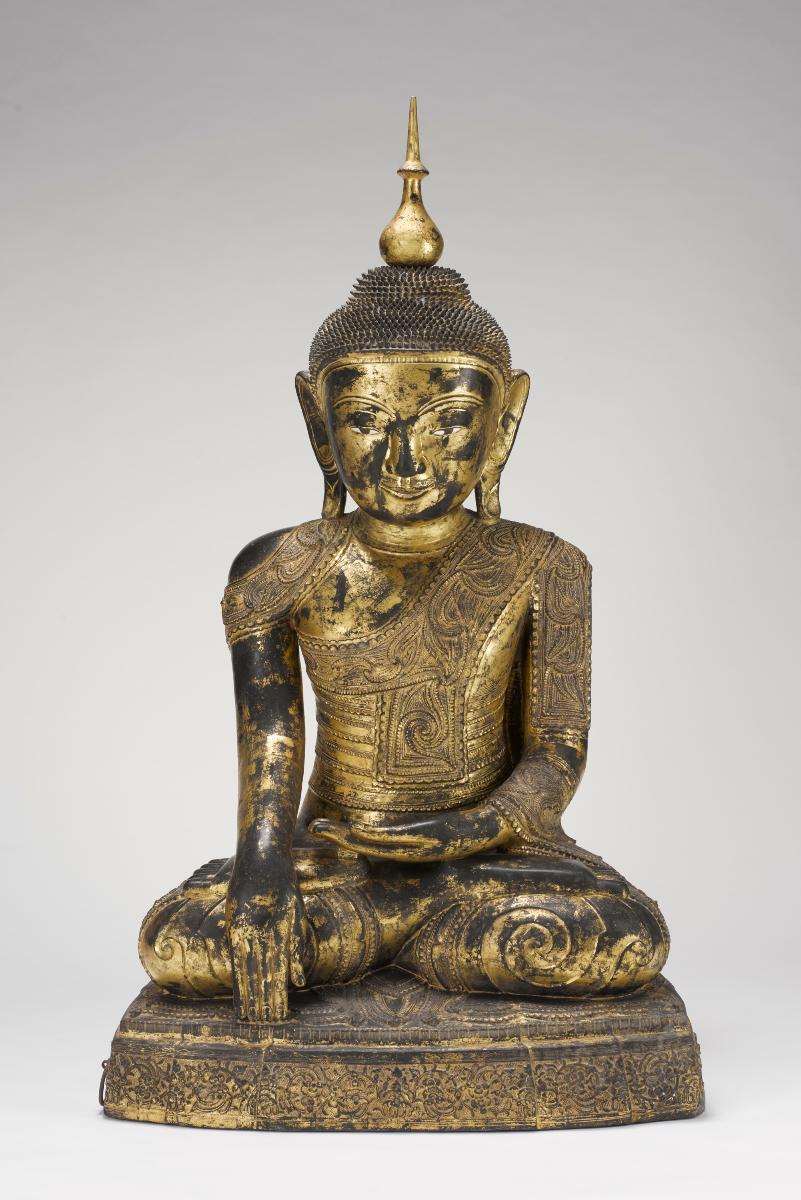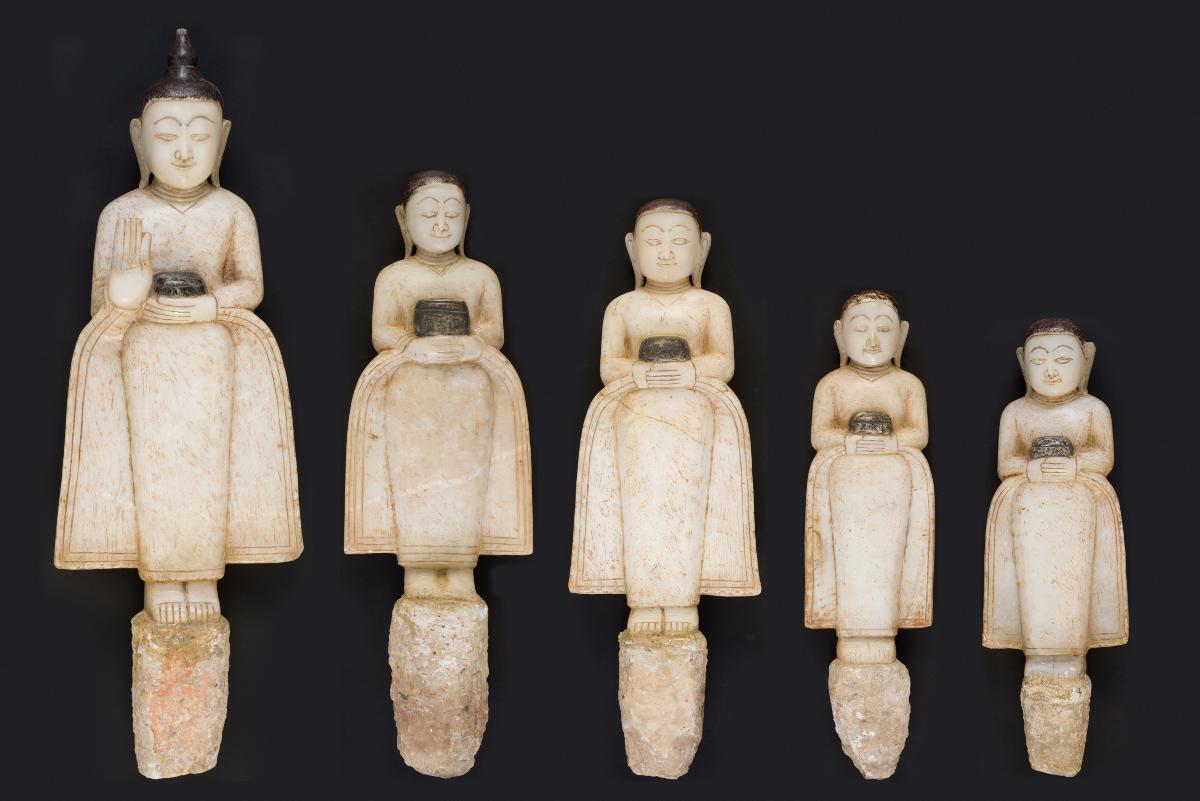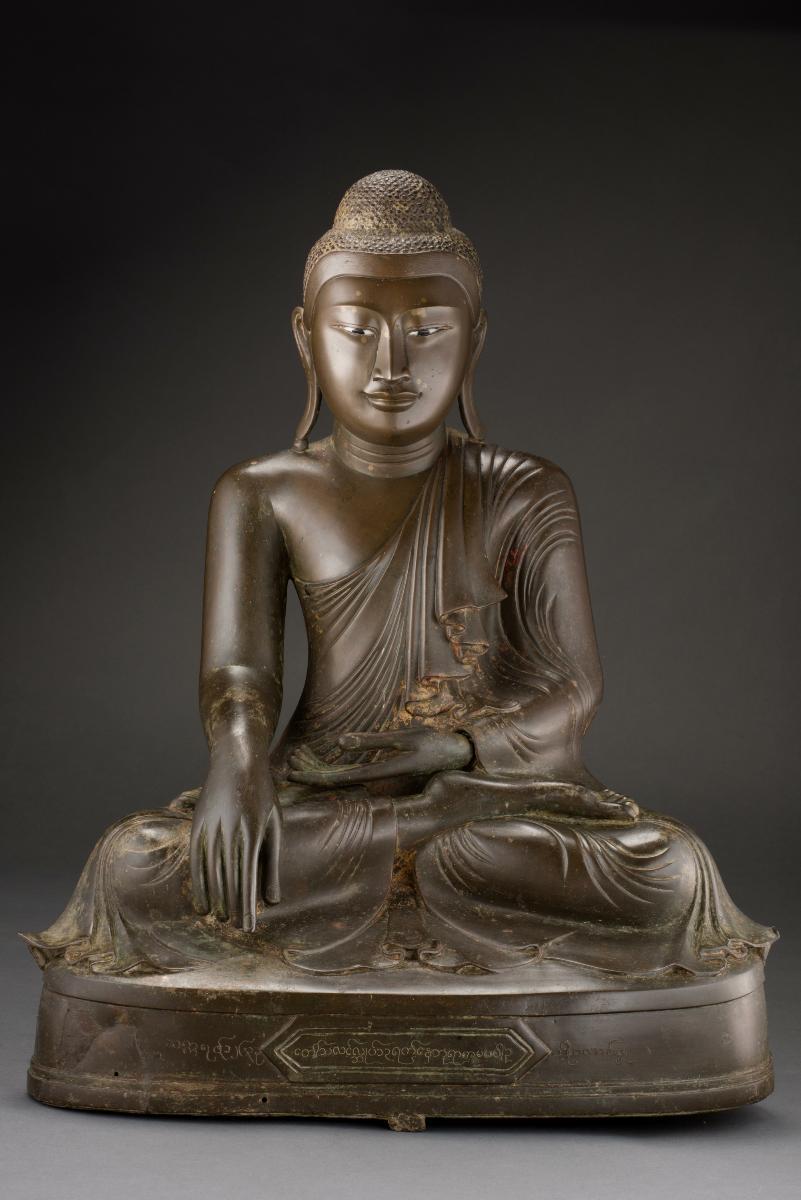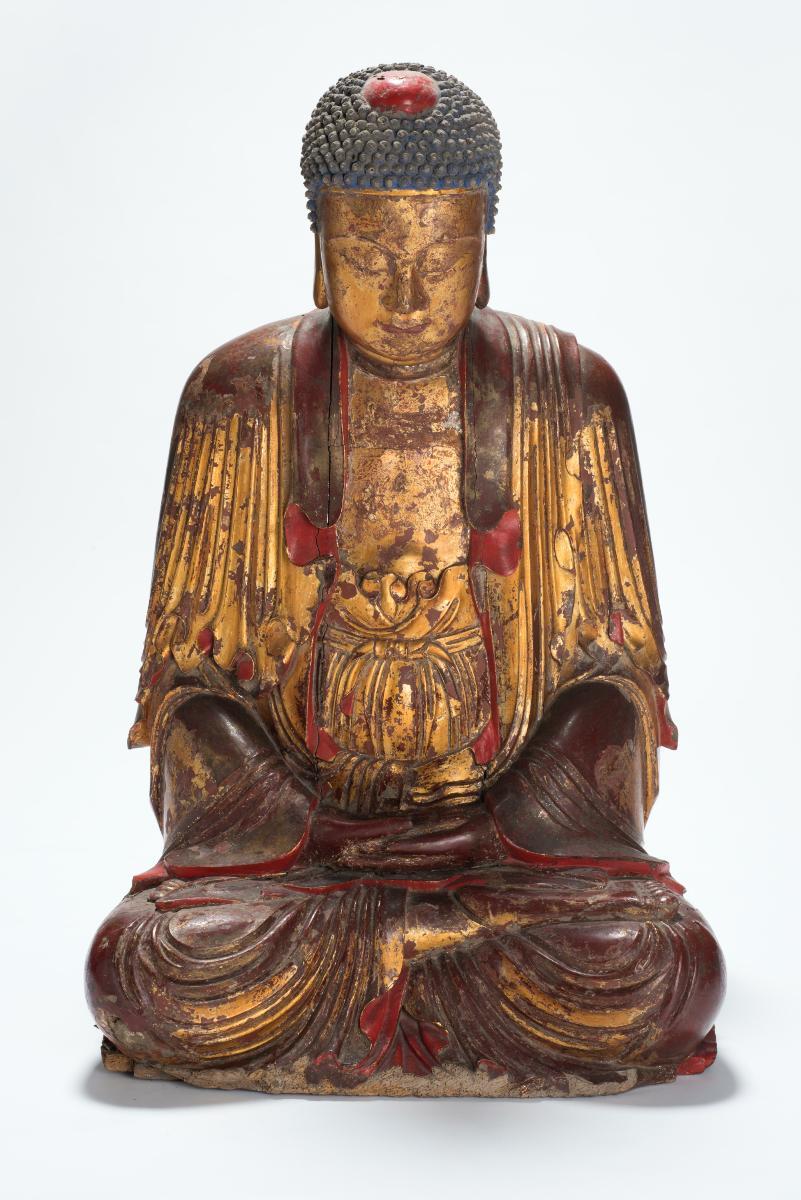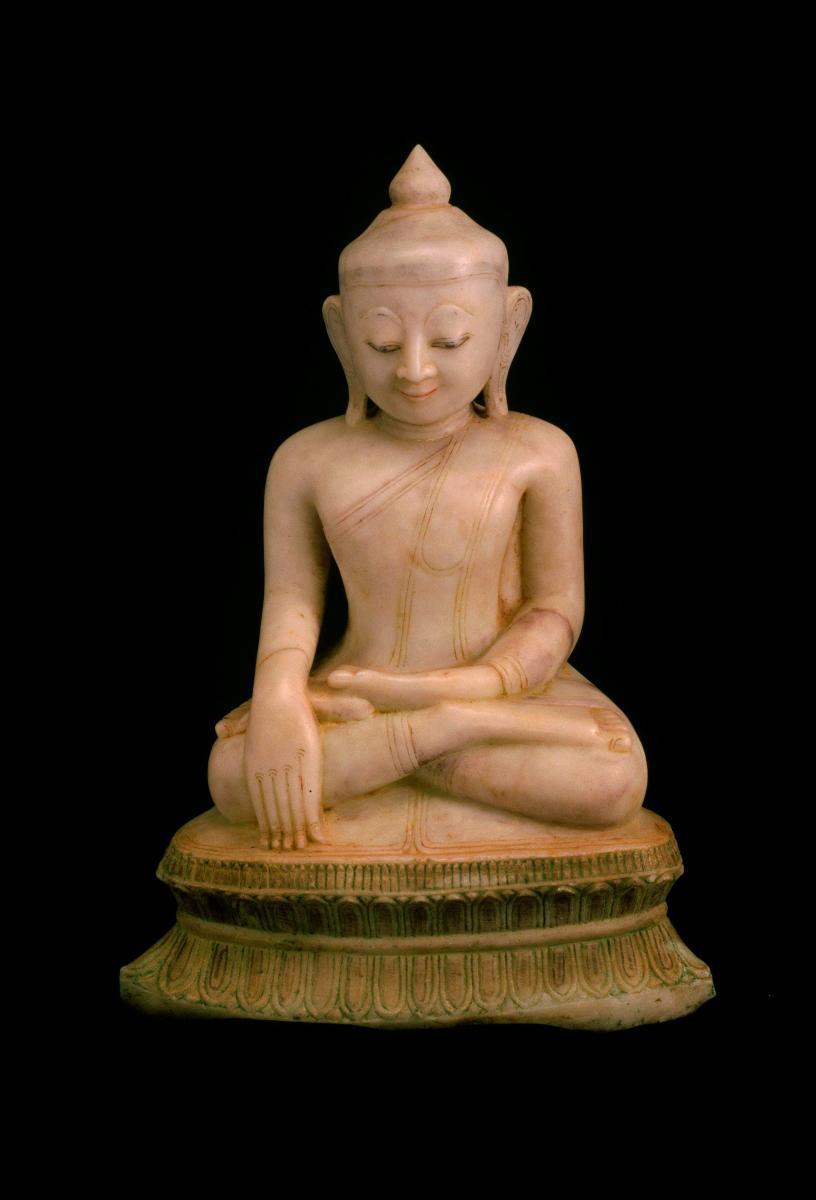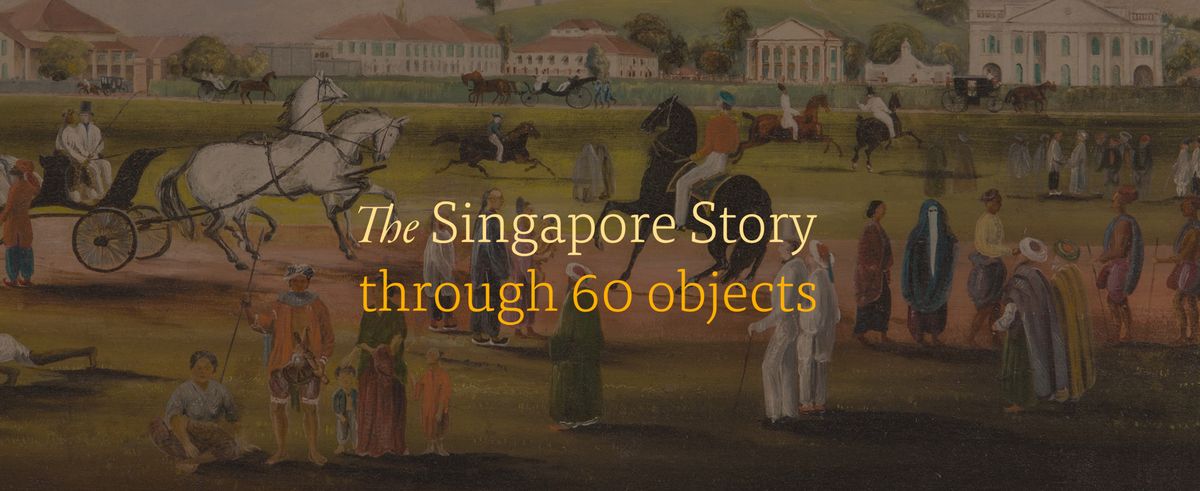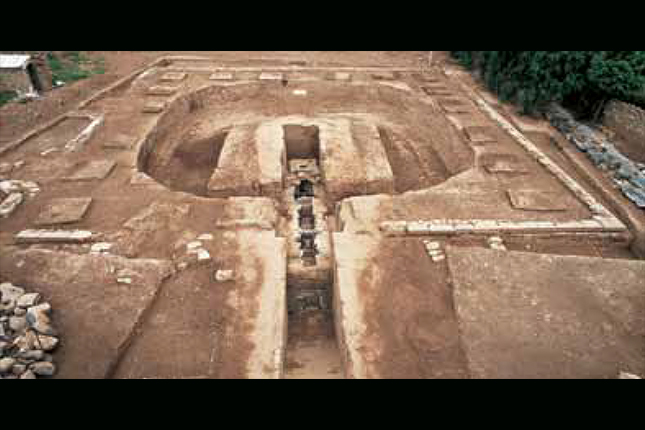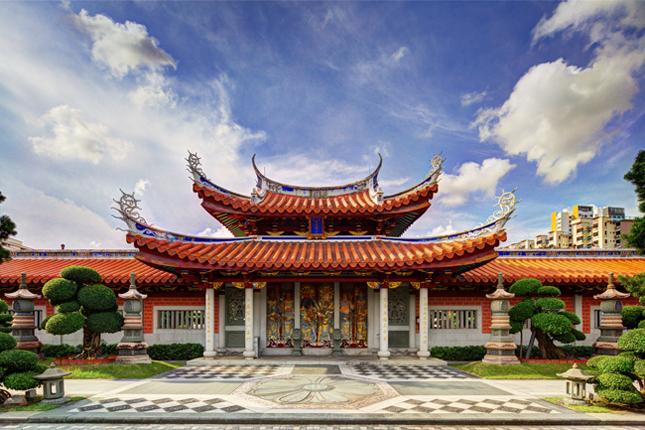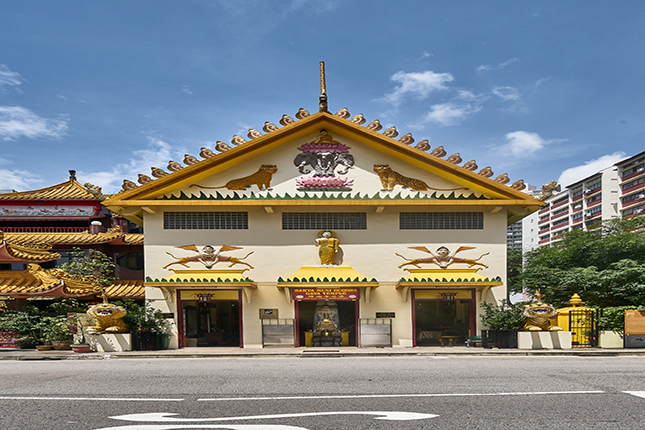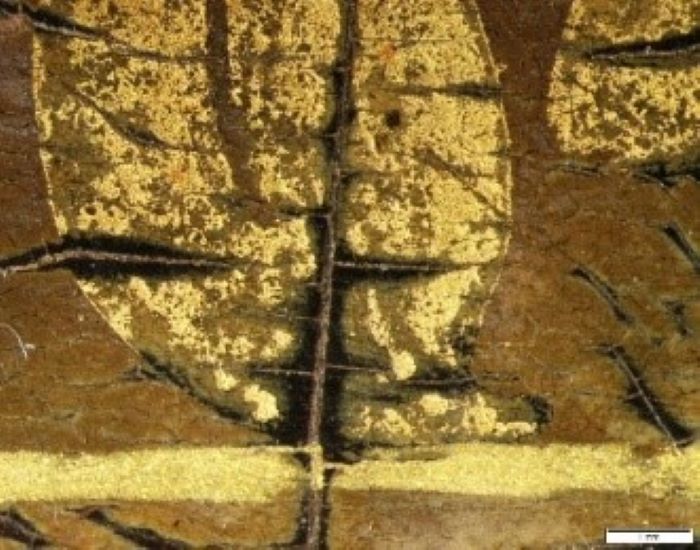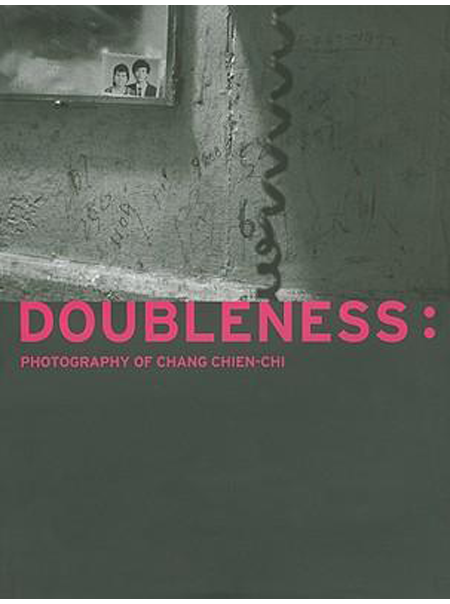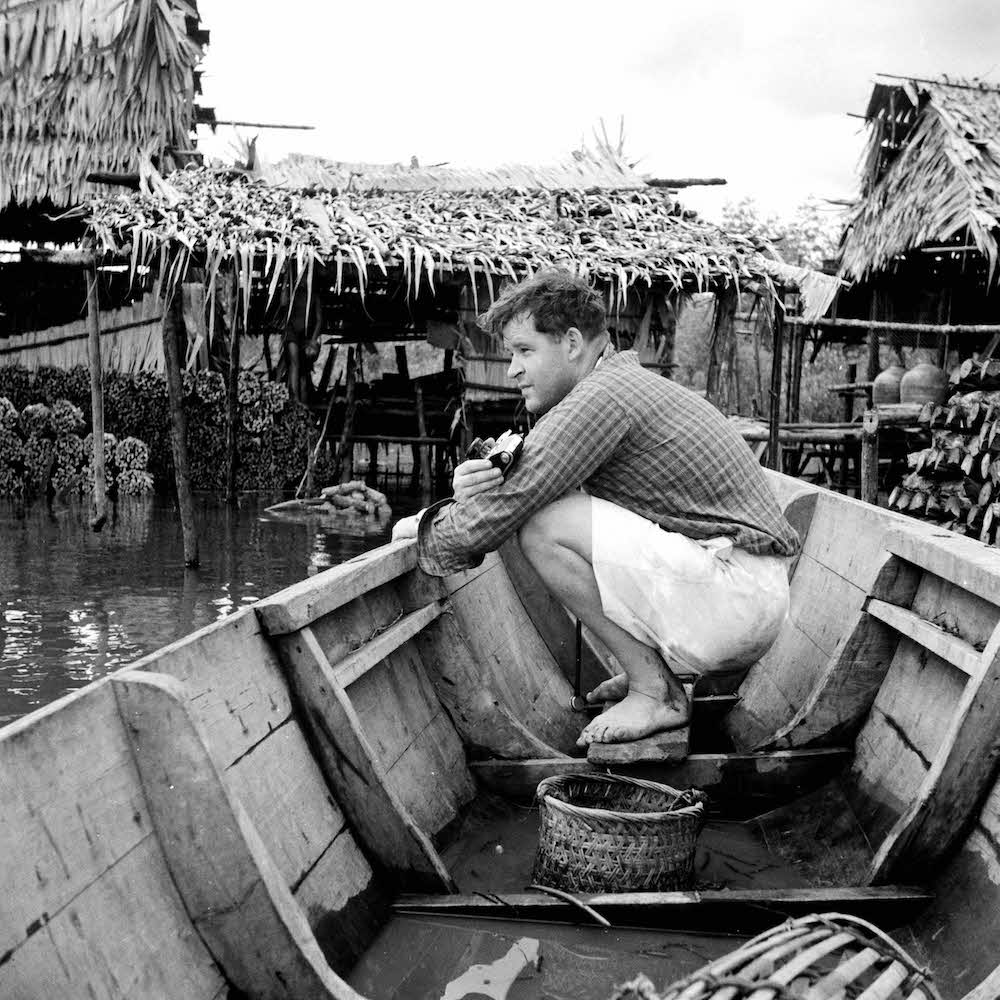Object size: 168.5 x 99.0 x 62.5 cm
Made using the dry lacquer technique, this image of the Shakyamuni Buddha is known locally as man-hpaya. Several distinct features of this image – such as the “Shwebo thorns” of thayo lacquer on the head and ushnisha, the flat, tear-shaped face with a wide forehead, and eyebrows set high above half-lidded eyes – points to its origins in the Shan States of Myanmar, where dry lacquer Buddha images were in popular use throughout the 18th and 19th century. Other features, such as the Chinese-influenced style of wearing the outer robe, the Burmese-influenced preference for dry lacquer over wooden or bronze images, and the lotus seated position with both soles visible (padmasana), highlights the ways in which Shan material culture has distinguished itself from Tai communities elsewhere.Despite their popularity, the making of Buddha images using the dry lacquer technique gradually declined by the 1930s due to an increased preference for marble images and illustrations on cloth and paper.




